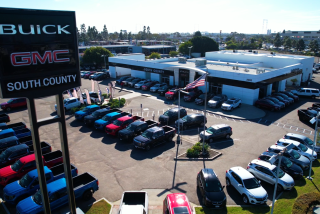GM Looking to the Internet to Satisfy Customers’ Desires
- Share via
BRESCIA, Italy — As Internet-driven supply and manufacturing processes become more sophisticated, General Motors Corp. believes that within three years as many as 80% of its new cars and trucks could be custom-ordered by consumers.
Newly installed Chief Executive G. Richard Wagoner is making clear that he plans to lean heavily on the Internet and information technology to turn the “old-economy” behemoth into a nimble 21st century manufacturer able to respond to customers’ individual desires.
“Our vision is to reestablish leadership in our core automotive business globally and leverage our size and expertise to create new business opportunities around our customer base,” Wagoner told about 70 journalists and financial analysts Thursday at the end of a three-day seminar on GM’s future.
With coming features such as e-mail capability and digital radio by satellite, automotive customers will become increasingly demanding about what features they desire, according to GM executives who made presentations here.
Because of such customer demands--not to mention the high cost of keeping inventories of unsold off-the-shelf vehicles--slashing order-to-delivery time has long been a Holy Grail for the industry.
“Cutting production time can take $500 to $1,000 out of each vehicle, and that’s enormous savings when auto makers are trying to squeeze even $10 or $20 out of each car’s costs,” said Saul Rubin, director of equity research at UBS Warburg in New York.
GM’s long-term goal has been to produce a three-day car--that is, rolling the completed vehicle off the assembly line three days after receiving an internal order for it. Today, such lead times are closer to two weeks at best.
But after consulting consumers and analyzing data with sociologists, GM unexpectedly found that “the exact vehicle of choice, reliably delivered in a reasonable time frame, is more important than a ‘three-day vehicle,’ ” said Harold Kutner, vice president for North American production. “Customization could be as high as 80% in 2003.”
To reach that target, GM is spending $3.2 billion a year on information technology and has invested $1.6 billion in e-commerce applications.
The best-known investment so far is OnStar, a wireless emergency communications system that also allows navigation; instant location; entertainment services, including theater and restaurant reservations; and conveniences such as unlocking cars by satellite. GM says it will have 1 million OnStar subscribers by year’s end, 4 million by 2003.
“It could easily be a $6-billion business,” said John Casesa, automotive analyst with Merrill Lynch in New York. OnStar could be worth more than $10 a share in a couple of years, Casesa said, and there has been frequent speculation over whether GM will spin off OnStar in an initial public offering. “But do you IPO it or keep it within GM to make GM more profitable?” Casesa said.
For now, Wagoner said, “absolutely we want to hang on to OnStar.”
“It couldn’t be anywhere without GM and Hughes,” he said, referring to the auto maker’s satellite-operating electronics subsidiary. “In three years, though, I don’t know if I would give the same answer.”
Other major e-business investments include Covisint, the massive online auto parts exchange that GM is developing with Big 3 rivals Ford Motor Co. and DaimlerChrysler and other partners. The venture is expected to host as much as $500 billion in business transactions a year.
GM is also using technology to catch the eyes of millions of Internet users. It has exclusive deals with America Online Inc. and NetZero Inc., the country’s largest free Internet service provider, to place ads on-screen as Web users surf pages related to such hobbies as fishing, golf and other sports. Someone browsing a gardening page through AOL or NetZero might see an ad for a Chevrolet sport-utility vehicle.
The auto maker has an even stealthier way of targeting potential buyers, blasting ads for Pontiac’s Grand Am, for example, onto pages of users looking up information on Ford’s Mustang. Such “ad missiles” are programmed to detect when AOL and NetZero users type certain keywords.
A succession of GM executives who spoke Thursday left no doubt that e-business has quickly become a corporate mantra. The auto maker has hired more than 200 e-commerce specialists in the last four years and assigned them to every business unit throughout the corporation.
The multibillion-dollar investments are “setting GM apart at the moment in the industry,” said James Hall, an automotive analyst at AutoPacific in Detroit.
“But the [information technology] industry moves so fast that spending alone won’t keep you ahead,” he said. “It will get you some neat hardware and some smart people you can keep for a while. But absolutely, happy people will be the hardest thing. Big companies like General Motors have a hard time implementing systems where people become absolute assets.”
So far GM has lost only 2% to 3% of its information technology hires, far better than the more than 20% annual turnover in Silicon Valley, Vice President Kutner said.
In trading Thursday, GM shares lost $2.06 to close at $60.25 on the New York Stock Exchange.






